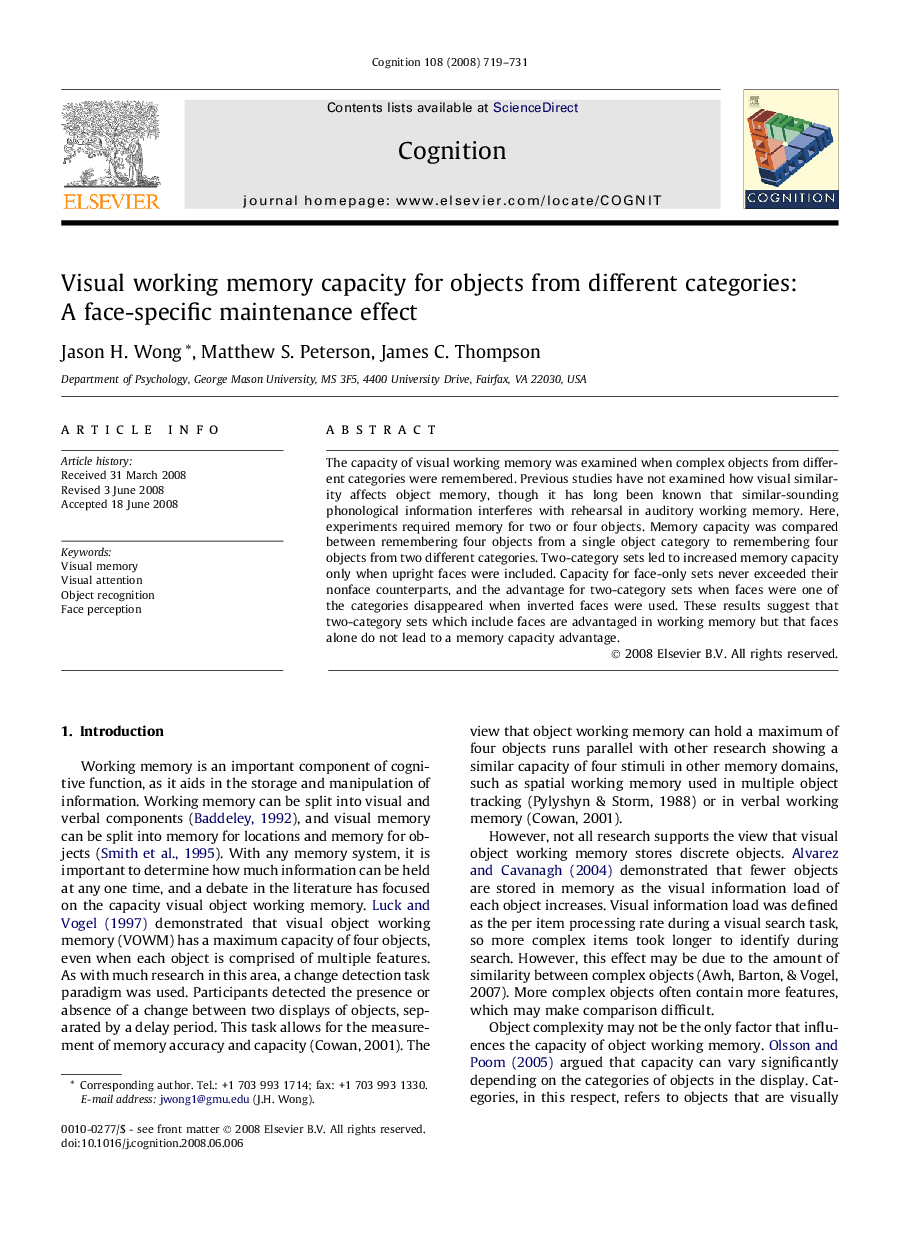| Article ID | Journal | Published Year | Pages | File Type |
|---|---|---|---|---|
| 927312 | Cognition | 2008 | 13 Pages |
The capacity of visual working memory was examined when complex objects from different categories were remembered. Previous studies have not examined how visual similarity affects object memory, though it has long been known that similar-sounding phonological information interferes with rehearsal in auditory working memory. Here, experiments required memory for two or four objects. Memory capacity was compared between remembering four objects from a single object category to remembering four objects from two different categories. Two-category sets led to increased memory capacity only when upright faces were included. Capacity for face-only sets never exceeded their nonface counterparts, and the advantage for two-category sets when faces were one of the categories disappeared when inverted faces were used. These results suggest that two-category sets which include faces are advantaged in working memory but that faces alone do not lead to a memory capacity advantage.
